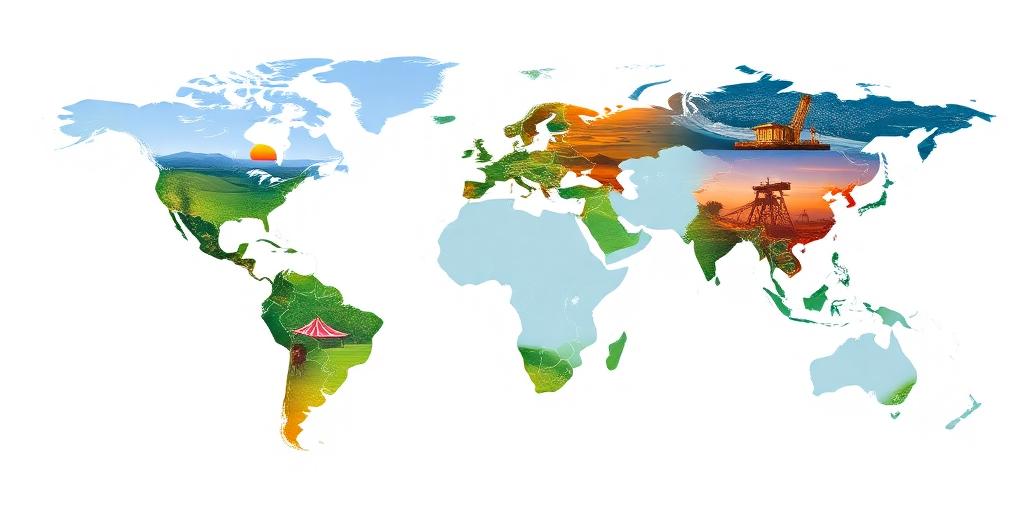Geopolitical Competition for Economic Resources: An Overview
In today's interconnected world, the pursuit of economic resources has become a central driver of geopolitical competition. Nations are vying for access to essential commodities, strategic trade routes, and technological dominance, reshaping international relations and creating both opportunities and challenges. This article provides an informative overview of the key aspects of this competition.
The Scramble for Resources
Nations require a steady supply of resources to fuel their economies, support their populations, and maintain their strategic capabilities. These resources include:
- Fossil Fuels: Oil, natural gas, and coal remain critical for energy production, despite the rise of renewable alternatives.
- Minerals and Metals: Essential for manufacturing, technology, and defense industries, including rare earth elements, lithium, and cobalt.
- Water: A fundamental resource for agriculture, industry, and human consumption, increasingly scarce in many regions.
- Arable Land: Fertile land for food production, subject to pressure from urbanization, climate change, and unsustainable agricultural practices.
Access to these resources is often unevenly distributed, leading to competition among nations to secure their supply.
Strategic Trade Routes and Infrastructure
Controlling or influencing strategic trade routes is another key aspect of geopolitical competition. These routes facilitate the movement of goods, resources, and energy, and their control can provide significant economic and strategic advantages. Examples include:
- Maritime Chokepoints: Such as the Strait of Hormuz, the Malacca Strait, and the Suez Canal, critical for global shipping.
- Land-Based Corridors: Like the Belt and Road Initiative, connecting China to Europe and beyond through infrastructure investments.
- Cyber Infrastructure: Control over digital networks and data flows, increasingly important in the modern economy.
Nations invest heavily in infrastructure and diplomatic efforts to secure access to these routes and maintain their influence.
Technological Dominance
Technological innovation has become a central battleground in geopolitical competition. Nations are investing heavily in research and development, education, and innovation ecosystems to gain a competitive edge in key technologies, including:
- Artificial Intelligence (AI): Transforming industries and military capabilities.
- 5G and Telecommunications: Enabling faster and more reliable communication networks.
- Renewable Energy: Driving the transition to a low-carbon economy.
- Biotechnology: Advancing healthcare, agriculture, and other sectors.
Technological dominance can provide nations with significant economic and strategic advantages, shaping the balance of power in the 21st century.
Implications and Challenges
The geopolitical competition for economic resources has several important implications and challenges:
- Increased Geopolitical Tensions: Competition over resources and strategic influence can lead to conflicts and instability.
- Economic Nationalism and Protectionism: Nations may adopt policies to protect their domestic industries and secure access to resources.
- Environmental Degradation: The exploitation of resources can have negative environmental consequences, exacerbating climate change and resource scarcity.
- Inequality and Uneven Development: The benefits of resource wealth may not be evenly distributed, leading to social and economic disparities.
Conclusion
The geopolitical competition for economic resources is a complex and multifaceted phenomenon that shapes international relations and has significant implications for global stability and development. Understanding the drivers, dynamics, and implications of this competition is essential for policymakers, businesses, and citizens alike. By promoting cooperation, sustainable resource management, and inclusive development, nations can mitigate the risks and harness the opportunities of this era of intense competition.









